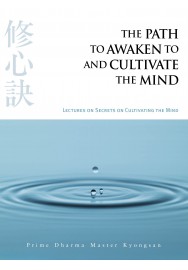Religion in Korea: Harmony and Coexistence

- Author : Robert Koehler
- Publisher : Seoul Selection
- Pub. Date : Nov 2012
- Cover : Paperback
- Dimensions (in inches) : 7.08 x 5.39 x 0.35
- Pages : 116
- ISBN : 9788997639052
$18.00
In Stock:45 $14.40
 On sale!
You Save : $3.60 (20%)
On sale!
You Save : $3.60 (20%)
-
View Full Size
- Product Description
- Contents Introduction 6 Chapter 1 Shamanism 10 History | Basic Beliefs & Practices | Mudang| Gut | Impact on Other Religions Chapter 2 Buddhism 32 History | Basic Beliefs | Seon vs. Gyo| Buddhist Monks and Nuns | Korean Buddhist Temples | Buddhist Art Chapter 3 Confucianism 56 History | Basic Beliefs | Confucian Practices | The Seowon| Impact on Society Chapter 4 Christianity 74 History | The Great Persecutions | Missionaries | Christianity and the Nationalist and Democracy Movements Chapter 5 Other Religions 90 Cheondogyo| Won Buddhism | Daejonggyo Appendix Statistics on Religion by Population in Korea 104 More about Religion in Korea 105 7 Buddhist Temples 106 7 Confucian Sites 108 7 Christian Sites 110 Map of 21 Religious Sites in Korea 112 Delving Deeper • Two Shamanist Rituals Designated as the Intangible Cultural Heritage of Humanity by UNESCO 24 • Shaman Kim Kum-hwa28 • Wonhyo&Uisang36 • PalmanDaejanggyeong38 • Kwan Um School of Zen 42 • Temple Stay 53 • Jeong Yak-yong and Silhak60 • Jongga Ancestral Rituals and Food Culture 69 • A Tour of Korea's Jongga Museums 70 • Korean Megachurches: Yoido Full Gospel Church 86 • Anglicanism in Korea 88 • Dangun: The Founder of Daejonggyo100 • Islam in Korea 102
- Press Release
- DescriptionKorea is a remarkable case study in religious coexistence. Even though only about half the country identifies as religious, the half that does displays a remarkable diversity of both indigenous and imported faiths, including Buddhism and Christianity (of both the Catholic and Protestant varieties).Korean religious pluralism is no recent phenomenon. Koreans have respected religious diversity since ancient times. Indeed, if there is one overriding religious tendency in the Korean population, it is a preference for syncretism, of finding essential and common truths amidst diverse and often competing doctrines. Current Korean leaders have continued making efforts to further inter-faith understanding.This book surveys the rich religious and spiritual tapestry that is contemporary Korea. We begin with the earliest of Korean faiths—the shamanism that prehistoric Koreans brought with them as they migrated to the peninsula from Central Asia—and continue on to today's most prominent faiths: Buddhism, Christianity, andConfucianism. Korea has given birth to a large number of indigenous faiths, and we will take a look at some of these, too.
No customer comments for the moment.











